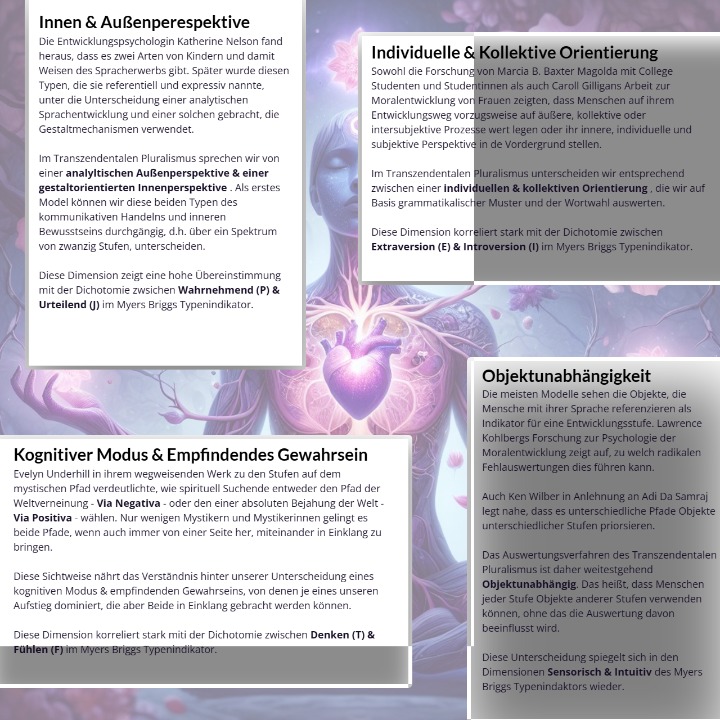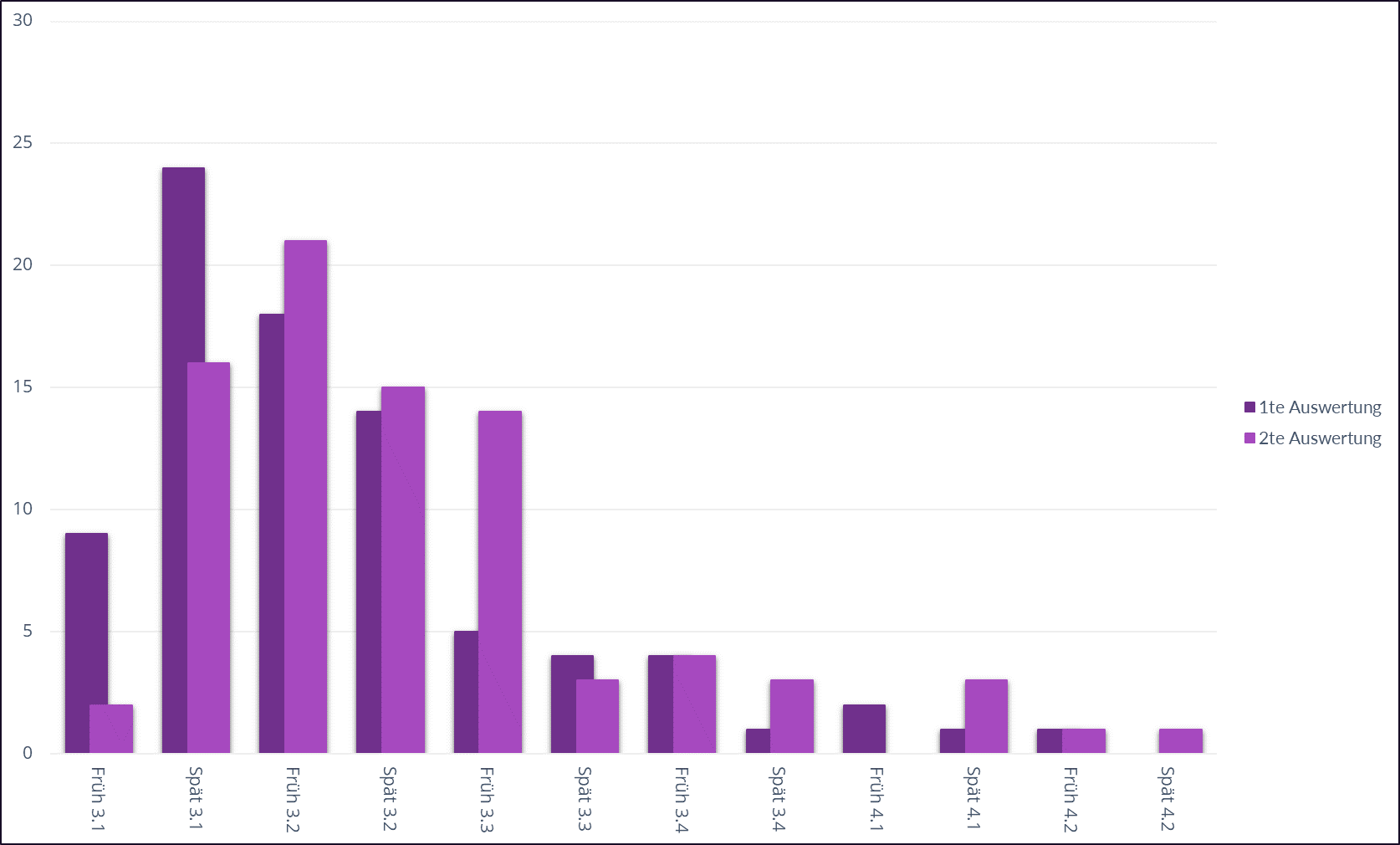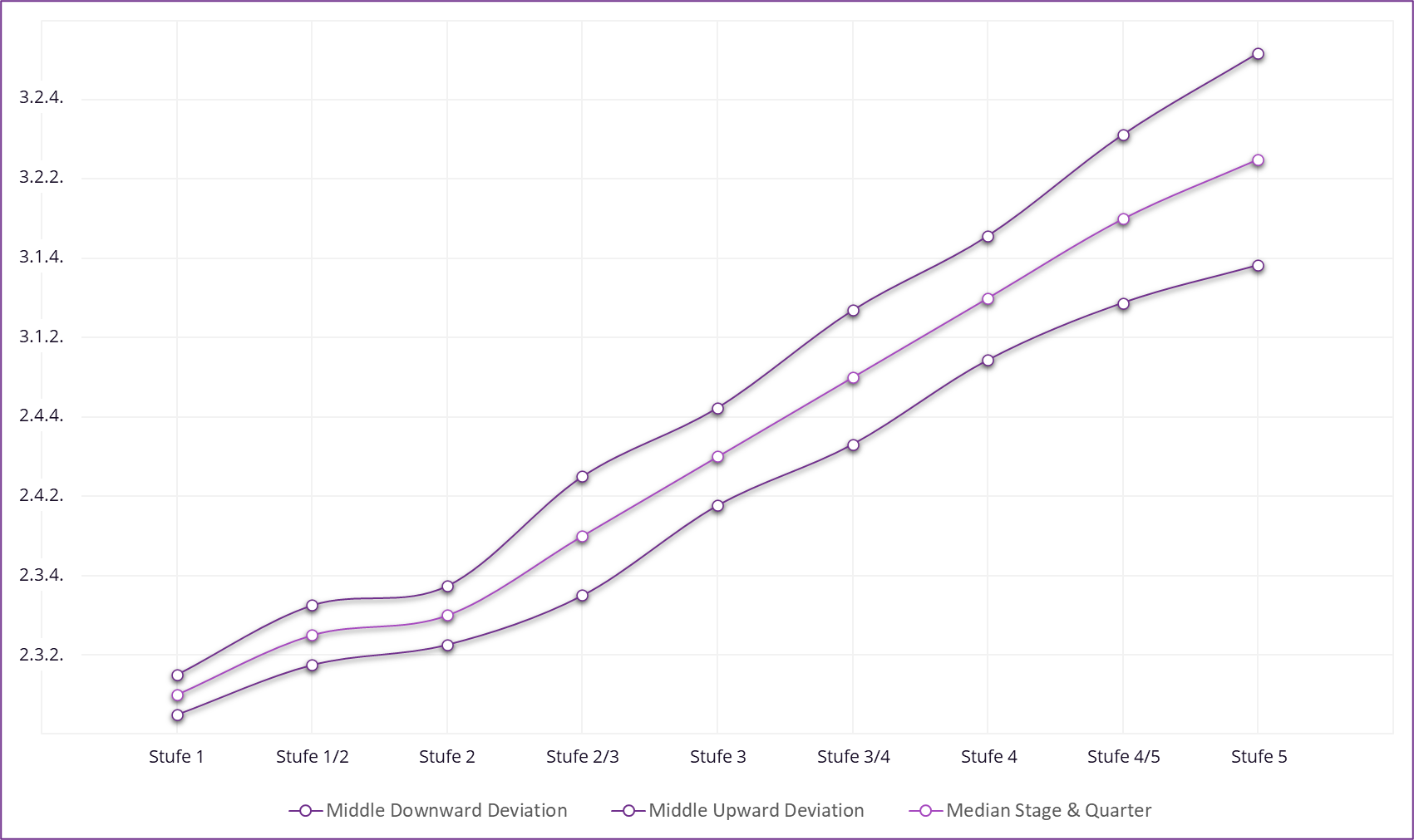

Individuelle & Kollektive Orientierung
Kognitiver Modus & Empfindendes Gewahrsein
Innen & Außenperespektive
Objektunabhängigkeit
Sowohl die Forschung von Marcia B. Baxter Magolda mit College Studenten und Studentinnen als auch Caroll Gilligans Arbeit zur Moralentwicklung von Frauen zeigten, dass Menschen auf ihrem Entwicklungsweg vorzugsweise auf äußere, kollektive oder intersubjektive Prozesse wert legen oder ihr innere, individuelle und subjektive Perspektive in de Vordergrund stellen.
Im Transzendentalen Pluralismus unterscheiden wir entsprechend zwischen einer individuellen & kollektiven Orientierung , die wir auf Basis grammatikalischer Muster und der Wortwahl auswerten.
Diese Dimension korreliert stark mit der Dichotomie zwischen Extraversion (E) & Introversion (I) im Myers Briggs Typenindikator.
Evelyn Underhill in ihrem wegweisenden Werk zu den Stufen auf dem mystischen Pfad verdeutlichte, wie spirituell Suchende entweder den Pfad der Weltverneinung - Via Negativa - oder den einer absoluten Bejahung der Welt - Via Positiva - wählen. Nur wenigen Mystikern und Mystikerinnen gelingt es beide Pfade, wenn auch immer von einer Seite her, miteinander in Einklang zu bringen.
Diese Sichtweise nährt das Verständnis hinter unserer Unterscheidung eines kognitiven Modus & empfindenden Gewahrseins, von denen je eines unseren Aufstieg dominiert, die aber Beide in Einklang gebracht werden können.
Diese Dimension korreliert stark miti der Dichotomie zwischen Denken (T) & Fühlen (F) im Myers Briggs Typenindikator.
Die Entwicklungspsychologin Katherine Nelson fand heraus, dass es zwei Arten von Kindern und damit Weisen des Spracherwerbs gibt. Später wurde diesen Typen, die sie referentiell und expressiv nannte, unter die Unterscheidung einer analytischen Sprachentwicklung und einer solchen gebracht, die Gestaltmechanismen verwendet.
Im Transzendentalen Pluralismus sprechen wir von einer analyltischen Außenperspektive & einer gestaltorientierten Innenperspektive . Als erstes Model können wir diese beiden Typen des kommunikativen Handelns und inneren Bewusstseins durchgängig, d.h. über ein Spektrum von zwanzig Stufen, unterscheiden.
Diese Dimension zeigt eine hohe Übereinstimmung mit der Dichotomie zwsichen Wahrnehmend ℗ & Urteilend (J) im Myers Briggs Typenindikator.
Die meisten Modelle sehen die Objekte, die Mensche mit ihrer Sprache referenzieren als Indikator für eine Entwicklungsstufe. Lawrence Kohlbergs Forschung zur Psychologie der Moralentwicklung zeigt auf, zu welch radikalen Fehlauswertungen dies führen kann.
Auch Ken Wilber in Anlehnung an Adi Da Samraj legt nahe, dass unterschiedliche Pfade (Yogi, Weiser, Heiliger) Objekte unterschiedlicher Stufen priorisieren.
Das Auswertungsverfahren des Transzendentalen Pluralismus ist daher weitestgehend Objektunabhängig. Das heißt, dass Menschen jeder Stufe Objekte anderer Stufen verwenden können, ohne das die Auswertung davon beeinflusst wird.
Diese Unterscheidung spiegelt sich in den Dimensionen Sensorisch & Intuitiv des Myers Briggs Typenindaktors wieder.











